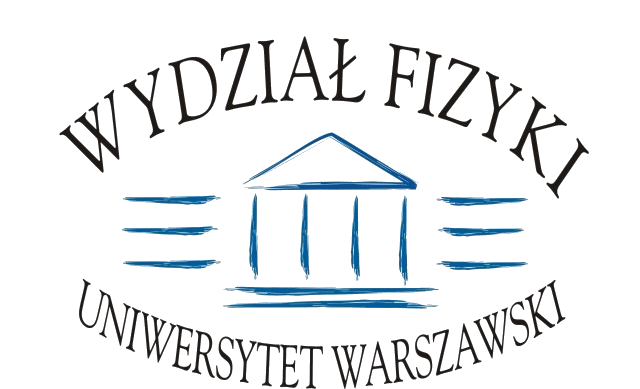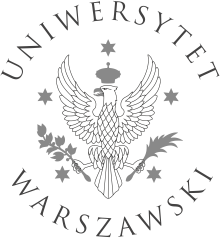Seminarium Teorii Oddziaływań Elementarnych
2006/2007 | 2007/2008 | 2008/2009 | 2009/2010 | 2010/2011 | 2011/2012 | 2012/2013 | 2013/2014 | 2014/2015 | 2015/2016 | 2016/2017
2017-06-12 (Poniedziałek)
Matthias Steinhauser (Karlsruhe Institute of Technology)
The theory uncertainty of the top quark pole mass
In the first part of the talk QCD corrections are discussed to the relation between $\overline{\rm MS}$ and on-shell heavy quark masses up to four-loop order. The results are used to estimate the contributions from 5 and more loops to the mass relation which allows us to obtain a quantitive result for the absolute uncertainty of the top quark pole mass.
2017-06-05 (Poniedziałek)
seminarium nie odbedzie sie
2017-05-29 (Poniedziałek)
Philip Diessner (DESY, Hamburg)
Phenomenology of the MRSSM: A light singlet in the dark and at the LHC
As the LHC continues to push the bounds on SUSY masses, alternatives to the MSSM need to be considered on equal footing. In this talk I will discuss a special scenario of the Minimal R-Symmetric Supersymmetric SM (MRSSM) which includes a light singlet Higgs boson. Through a novel connection between the scalar and chargino/neutralino sector induces by R-symmetry this scenario is very predictive and may be tested by LHC in the coming years.
2017-05-22 (Poniedziałek)
(IFT UW)
Planck 2017
You are cordially invited to participate in lectures during the PLANCK 2017 conference which takes place at Faculty of Physics, May 22-27. Detailed timetable of talks can be found on http://indico.fuw.edu.pl/conferenceTimeTable.py?confId=47#20170521
2017-05-15 (Poniedziałek)
Jakub Wagner (NCBJ)
What can neutrinos teach us about three dimensional structure of nucleons?
Exclusive processes may be described in terms of generalized parton distributions (GPDs). In comparison to the traditional parton distributions, GPDs carry additional information about the structure of hadrons. They allow for a better understanding of the nucleon spin structure and for its three-dimensional description. After the review of this topic, I will present the new results on the neutrino induced deeply virtual meson production, which shows promising sensitivity to gluons and to transversity GPDs.
2017-05-08 (Poniedziałek)
Seminarium nie odbędzie się
2017-04-24 (Poniedziałek)
A. Filip Zarnecki (IFD UW)
CLIC project: status and physics programme
I will present the current status of the CLIC project, and try to summarise its physics programme. Seminar will be based mainly on the reports presented at the recent CLIC Workshop 2017 at CERN.
2017-04-10 (Poniedziałek)
Da Huang (IFT UW)
Large Neutrino-anti-neutrino Oscillations from High-dimensional Lepton Number Violating Operator
It is usually believed that the observation of the neutrino-antineutrino oscillations is almost impossible since the oscillation probabilities are expected to be greatly suppressed by the square of tiny ratio of neutrino masses to energies. Such an argument is applicable to most models for neutrino mass generation based on the Weinberg operator, including the seesaw models. However, in this talk, I shall give a counterexample to this expectation, and show that large nu-antinu oscillation probabilities can be obtained in a class of models in which both neutrino masses and neutrinoless double beta ($0u\beta\beta$) decays are induced by the high-dimensional lepton number violating operator ${\cal O}_7 = \bar{u}_R l^c_R \bar{L}_L H^*d_R + {\rm H.c.}$ with u and d representing the first two generations of quarks. In particular, the predicted $0u\beta\beta$ decay rates have already placed interesting constraints on the $u_e \leftrightarrow \bar{u}_e$ oscillation. Finally, an UV-complete model is provided to realize this scenario, in which a dark matter candidate naturally appears due to the new U(1)_d symmetry.
2017-04-03 (Poniedziałek)
Eliezer Rabinovici (Hebrew University)
On singularities, quantum noise and holographic complexity
Various properties of some space like singularities in string theory will be discusses in the AdS/CFT holographic framework. Attempts to apply the diagnostic tools of long time correlations and complexity, to these singularities, will be discussed.
2017-03-27 (Poniedziałek)
Małgorzata Janik (Wydział Fizyki Politechniki Warszawskiej)
An overview of experimental results from ultra-relativistic heavy-ion collisions at the CERN LHC
Stron 1 z 3






